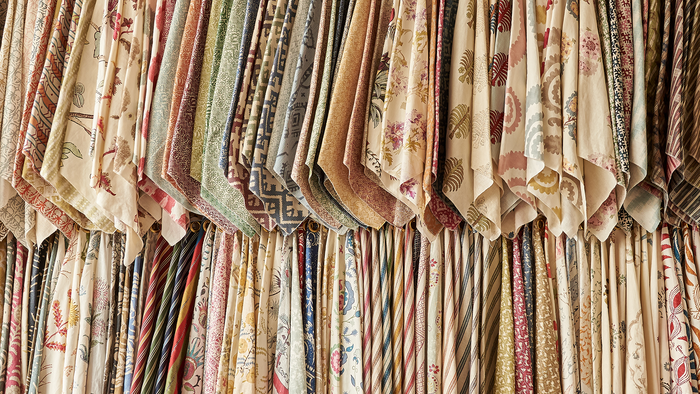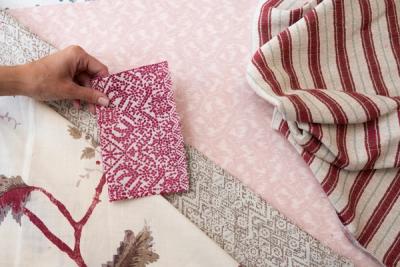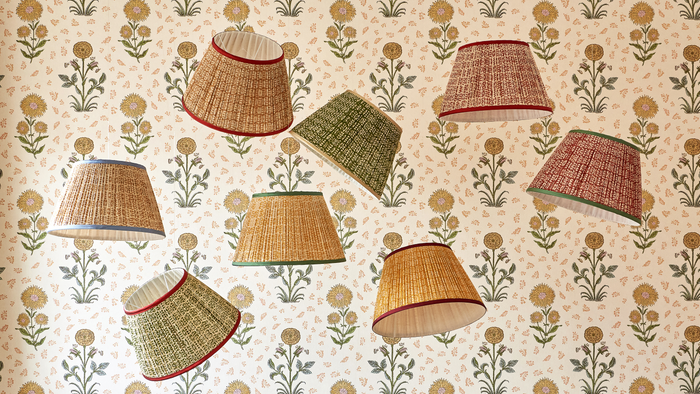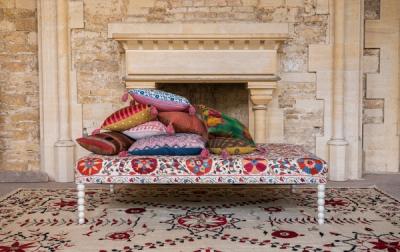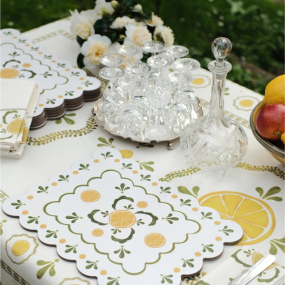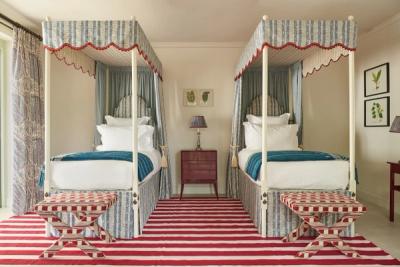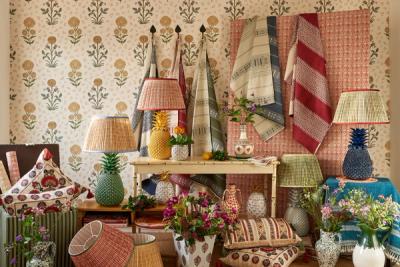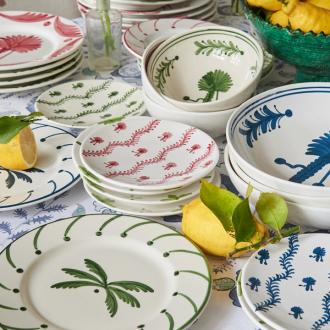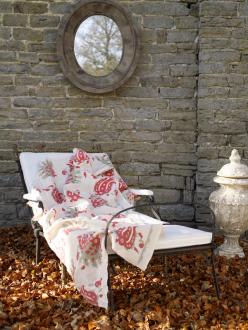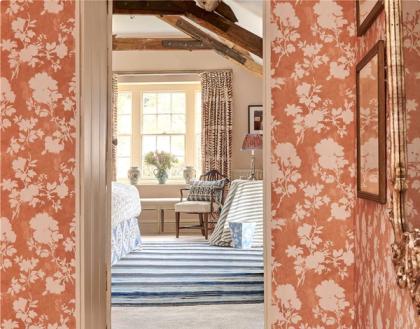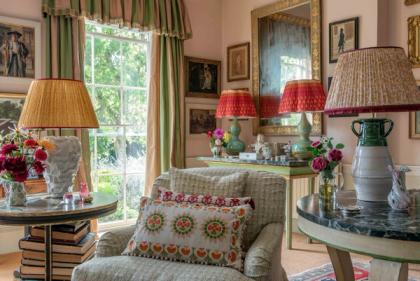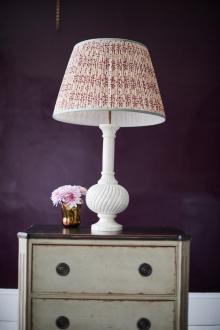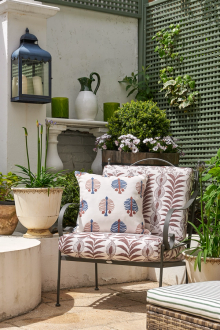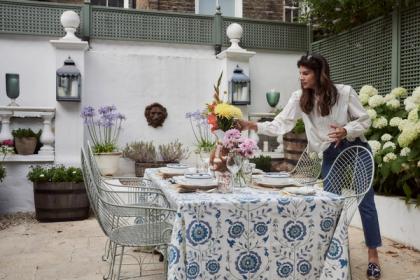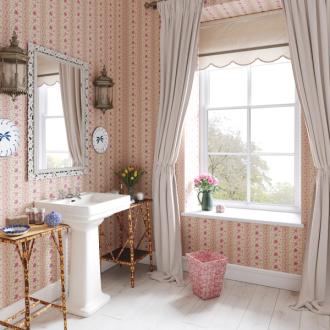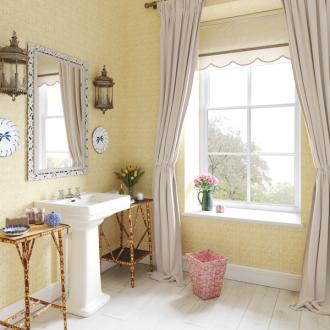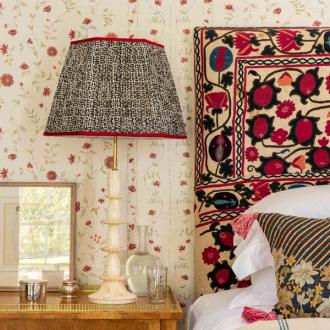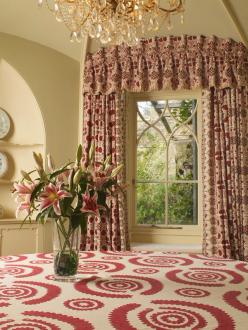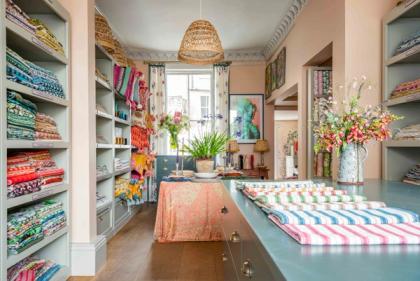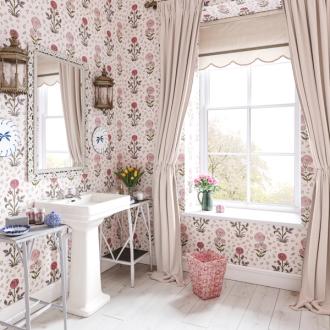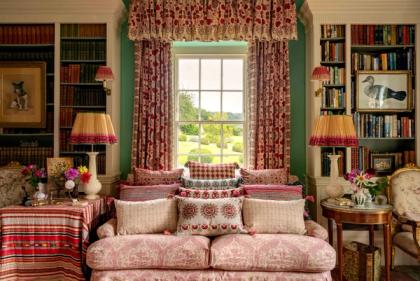The Penny Morrison Guide to Handmade Cushions

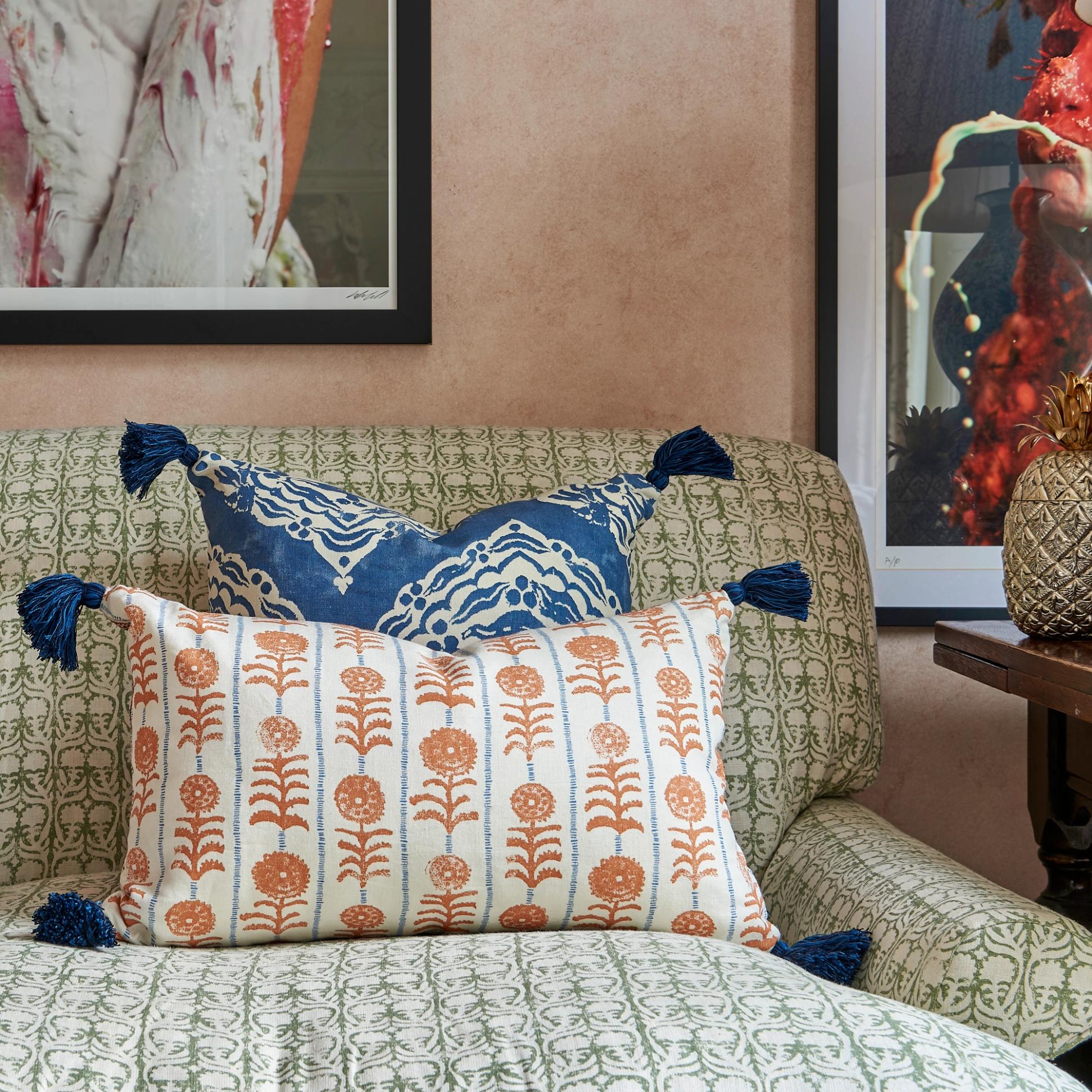
A large part of what motivated us at Penny Morrison is artisanal work – the skill and creativity not just of the people who craft our pieces, but of the many artisans who came before them and who honed the techniques behind the creativity.
Penny Morrison’s work has found its way across the globe, and many parts of the globe have, in turn, found their way into the pieces we sell here.
From our hand painted ceramics to the fabrics we sell that have been block printed using traditional (and very old) techniques, we pride ourselves on the quality and beauty of everything that finds its way into our collections.
And we feel exactly the same way about our collection of handmade cushions, which represent our love affair with beautiful fabric and impeccable craftmanship all at once. Plus, if you’ve spent much time on our site in the past, you’ll know we’re convinced that you can never have too many cushions.
Here is everything you need to know before you start browsing.
Handmade Cushions: The Perks
Sustainability
Mass production is a major problem. All too often, it leads to lower quality products being sent out all over the world – products that have been created in poor or even cruel conditions, using materials that are directly contributing to the destruction of the planet. Speed and high demand are part of a past that we, and many other people, would rather leave behind.
Handmade products – items that have been created, sourced, and purchased with respect to the creators and to the planet – are far more sustainable. While we are part of a global community of artisans and creatives, we remain committed to working with artisans closer to home, within the United Kingdom, or to work with artisans oversees who are as committed to sustainability and ethical production as we are.
Quality
When people are able to take their time – and, more importantly still, to take pride in their work, their skills and talents are better able to shine through. Plus, since sourcing handmade and handcrafted products represents a much more significant investment into the finished product, the quality of the materials used tends to be much higher.
This is very much the case for us. At Penny Morrison, we are extremely proud of the quality of our linens, cottons, weaves, and silks, and would never compromise on this. The durability of these natural fibres is part of our pledge to sustainability.
Craftmanship
True Craftmanship does more for the end result than its durability. Artisans spend years – if not decades – perfecting their technique, and there are some things that just can’t be replicated to the same effect by anything but a deft hand.
Embroidery is a perfect example of this. While machines have been created to do the work for us, there is nothing like an example of a hand-embroidered swatch of fabric, or knowing that someone devoted hours of time to creating it.
Uniqueness
Everything that is made by hand is unique, and those slight deviations and differences are what make them really worth the added investment. Our hand painted ceramics are all very subtly different from one another, which is proof of the fact that a human being spent time on each one – thinking their own thoughts, letting their muscle memory take the lead. Each piece has its own personality and proves that not everything needs to be a perfect and exact replica of the first.
Our Buying Guide
We write a lot about curating accent cushions throughout the home – about mis-matching or coordinating, overstuffing sofas or adding a finishing touch to a lonely chair.
Textile
In general, handmade items tend to comprise higher quality materials, largely because, with the added investment of time and skill, there’s no real incentive to use the cheapest possible components. It’s not totally fool proof but, in our experience, the two come hand in hand far more often than not.
While they are more expensive, natural textiles like linen and cotton are far better choices than cheaper, synthetic textiles – and, if you’re already making that added investment into handmade, it’s worth going that bit further for a fabric that will look better for longer, and feel more comfortable against your skin.
This is exactly what natural fabrics and weaves offer – longevity, breathability, durability, and beauty. Plus, they’re generally a lot more sustainable than the alternatives, since they need to be made in smaller batches, at a much slower pace, and without relying on plastics and unhealthy chemicals to pump them out into the world.
Colour
Colour is key, and even a room decorated around one specific, statement colour requires at least a few contrasting shades to bring it into sharper relief, or the whole thing can start to look like a strange set rather than a living space.
Some interior designers like to come up with a ‘colour story’ for their room – which essentially means that they prefer to work to a particular scheme made up of main colours and accent colours, which add a little contrast.
There is definitely something to be said for working to a rough guide, but we tend to prefer a more instinctive approach to choosing accents and furnishings.
Part of the pleasure of handmade pieces is that they carry that unique, one-of-a-kind charm about them, and that generally tends to pair best with décor that isn’t too regimented or coordinated.
When you’re looking at hand painted ceramics, you will inevitably notice slightly discrepancies between one and the next. Even if the pattern has been repeated a hundred times across a hundred plates, there will be minor differences – little flourishes that are unique to one plate – areas where a single bristle on the brush made an errant mark, or where the hand wobbled just slightly.
This is what we love about handmade pieces, and it’s exactly the same in the world of soft furnishings.
Many of our fabrics are printed and woven in small batches in England, or require the skill of an artisan to really perfect. Our Pink Petal and Sketched Stripe Gold cushion perfectly balances classical British style in a fun a playful combination.
Texture
Texture is just as powerful as colour and print, even if it’s not quite so noticeable from across the room. It adds a lot of rich detail – beyond what you introduce through contrasting patterns – and just helps to make things feel (and look) more luxurious.
One of the biggest benefits to investing in hand crafted textiles and cushions is the scope for creating texture and detail. As we mentioned before, one of our favourite examples of this is embroidery, an ancient skill that really helps to separate the ordinary from the exquisite.
It’s also very open to interpretation. Embroidery has been a mainstay of many cultures, from India to China, the Norman creators of the Bayeux Tapestry to the modern abstracts of needlework artists. It’s not tied to any particular era or style, which means it doesn’t tie you into a rigid theme.
Our Embroidered Folk Cushion, for instance, embraces Scandinavian influences. The same technique is echoed in pieces like our Red Embroidered Square Cushion, but in a very different way – and with very different results.
The other way to introduce texture is through the trimmings. Tassels and trims act a little like borders, and just add to the effect.
If you’re thinking about the overall texture of the cushions themselves, then it’s worth reading our guide to feather down and why it’s so great for cushions. Handmade cushions can of course be made using any type of stuffing – natural or synthetic – but, if you want to make a strong choice, we’d definitely recommend this particular stuffing choice over any other.
Care and Maintenance
Barring any delicate materials like Chantilly lace or Fabergé, handmade items are generally very hardwearing and durable. The extra care and attention to detail shown by the artisans who make them means that the quality assurance is there.
For cushions, a high level of craftmanship means that they can last years and years without worry, or even much in the way of care and maintenance – particularly if you opt for the natural fabrics we mentioned above.
In terms of upkeep, they can be a little more demanding, since we tend to recommend dry-cleaning as the safest option, but once you fall into a rhythm with this it doesn’t represent much of a burden. A semi-regular dry clean will help to keep them fresh, without putting the dyes, prints, and soft textures at risk.
Our passion for handmade, artisanal pieces began many, many years ago, and it remains just as powerful as ever. Deciding to curate pieces that have been sourced from craftsmen and women around the world is, for us, the ultimate interior design secret – and, even more importantly, the best way to make a home that feels as unique as it does cosy.
You can take a look at our complete range of decorative cushions for more inspiration.
